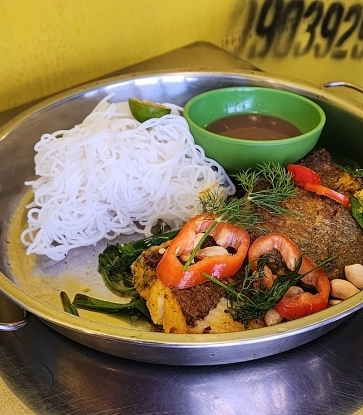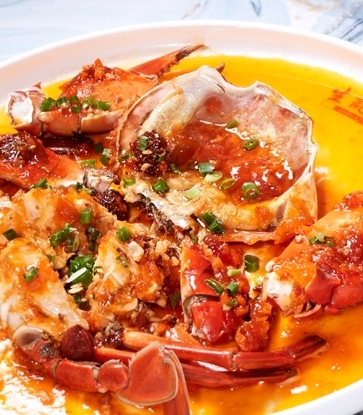“When the shop opened, the owner then thought the fish congee recipe developed was very delicious, and it could be trusted upon to make good business. That’s where the name came from.”
Making congee is more difficult than it sounds. A tasty bowl of rice porridge should maintain some bite from the rice, have a balanced consistency and be filled with aromas of the grain. The congee base of Trusty's recipe accomplishes all of those. In addition, there’s the umami of fish to score extra points for its product.

When Trusty opened its doors in 2000, the former owner mentioned its congee was supported by a broth made with five to six kinds of fish weighing in at 18 catties in total. To this broth they added raw rice and cooked the mixture for four hours. The key is that they had acquired a secret recipe from local fishermen to prepare a sweet fish broth without any funky smell. This unique dish won recognition of the diners from the get go. The restaurant joined Tai Hing Catering Group some years later and added several branches across the city. But the quality of the congee was maintained as always.
“Every day we use multiple kinds of fresh fish to produce the rich fish broth. Among them, I can only reveal crucian carp,” Lam says. While he can't disclose the types or amounts of rice in the recipe, we guess it is a combination of Thai jasmine rice and Japonica rice based on the fragrance and sticky body of the porridge. Lam nods with smiles—but no words.
“Once it is cooked and kept warm on the heat, the congee would get more and more sticky," he adds. "To keep the consistency right, we make two to three batches of congee twice to three times a day at different hours." He also states that all the branches follow the same recipe with a set proportion of fish, rice and water, which lets them maintain the high standard of the congee.
Upon tasting, the fish broth congee is a true delight—just as thick as we like it, with vivid oceanic flavors and subtle sweetness. Further to that, we are pleased to feel none of the funky fishy smell or mouth-drying sensation created by MSG.

Having built such a strong congee base, Trusty makes the most of it by adding superior ingredients to the mix.
“Cantonese cuisine puts more emphasis in our congee than other Chinese cuisine. Northern Chinese pairs plain congee with side dishes, Teochew congee is more like a rice soup. We have ‘raw-boiled congee’ and ‘lou fo congee’,” Lam says.
“Lou fo congee” is one which adds ingredients—classic combinations include dried fish and peanuts, as well as dried vegetables and pork—into the congee base when it is half-cooked. In comparison, “raw-boiled" congee has raw meat or fish cooked inside the finished congee base. Between the two styles, the latter is revered for the extra flavor the raw ingredients bring to the porridge. It’s also the style of congee Trusty focuses on. Lam believes the fish broth congee base is not only a natural match to seafood, but that it also works surprisingly well with meat. It doesn’t get any better when the congee extracts all its savory essence.
Congee with scallop and pork liver is the restaurant’s bestseller. The porridge is immersed with the sweetness of the Hokkaido scallop, its surface covered by a thin layer of aromatic oil from the liver. The liver itself is perfectly gooey, while the scallop is cooked to medium—both feed on the great rice porridge. Everything clicks together as a whole.

The side dishes at Trusty served with the congees are also noteworthy. At the time of interview, every table ordered a plate of crispy grass carp skin. The skin comes from the back of the fish, and is well-liked for its crunch and freshness. The flavor is elevated by juliennes of spring onion, soy sauce and a hint of white pepper powder. The peanuts make for an interesting final touch.
“The back skin is thicker and crunchier than the belly skin. Once cooked, the skin is submerged in iced water to maintain the texture,” Lam says.

This article was written by Ou Pei Change and translated by Vincent Leung. Click here to read the original version of this story.





















